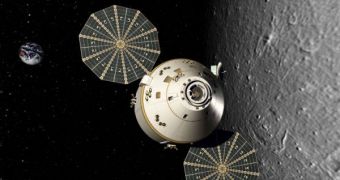This April, US President Barack Obama asked the US Human Space Flight Plans Committee to assess NASA's situation as objectively as possible, and to present a report on possible avenues of development for the future as fast as possible. According to a press release on NASA's website, the panel is scheduled to release its final report this Thursday, after a draft version and a basic sketch of the conclusions have already been made available.
Already, a preliminary, draft version of the document is making the rounds at the White House and NASA, and one official who has seen it tells Space that the main issue plaguing the space agency at this point is funding. It all makes sense when considering that, over the past five years, more than $9 billion have went into Project Constellation alone, which represents the agency's vision on future space exploration. Two new rockets, a lunar lander, and a crew transport capsule are included in the program, alongside a potential third delivery system.
In a summary report it delivered on September 8, the panel, led by former Lockheed Martin CEO Norm Augustine, said that, unless the federal government was willing to add up to the $3 billion per year in NASA funding, the agency would remain unable to send people to the Moon for decades to come. The document also revealed that existing funding schemes did not allow engineers and contractors to finish the ARES I rocket and the Orion Crew Exploration Vehicle in time for their planned 2015 launch dates.
“What's really at stake in the short-term is Ares I, and all of this push for commercial crew I would think is viewed as an alternative to a government-run program like Ares I. Long-term, it's whether in fact there is going to be a meaningful space exploration program beyond the International Space Station,” George Washington University Professor Emeritus and space policy expert John Logsdon said of the implications the review document had.
“I think the $3 billion figure has been widely misunderstood. The actual proposal from the Augustine committee is a gradual increase to that level over four years through 2014, with only a little less than $1 billion proposed for next year,” the expert added. The activity of the panel has been recently plagued with suspicion on account of the fact that members proposed a larger involvement of private companies, over a government-run program. Analysts and NASA alike are now waiting for a decision from higher authorities, which will determine if the agency will explore space in the future, or be confined to the low-Earth orbit.

 14 DAY TRIAL //
14 DAY TRIAL //